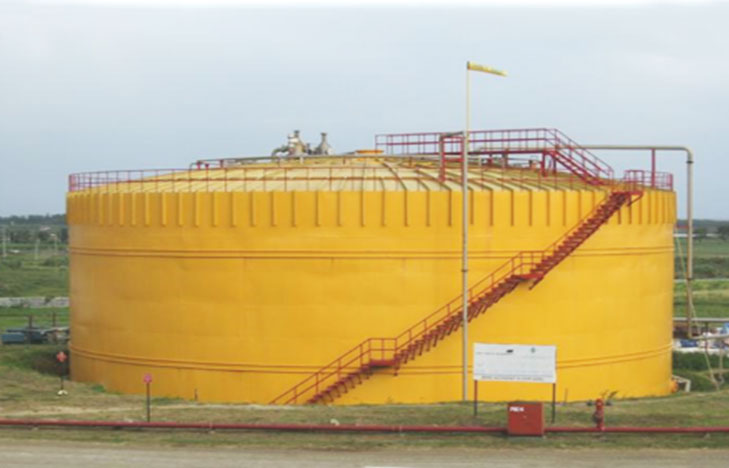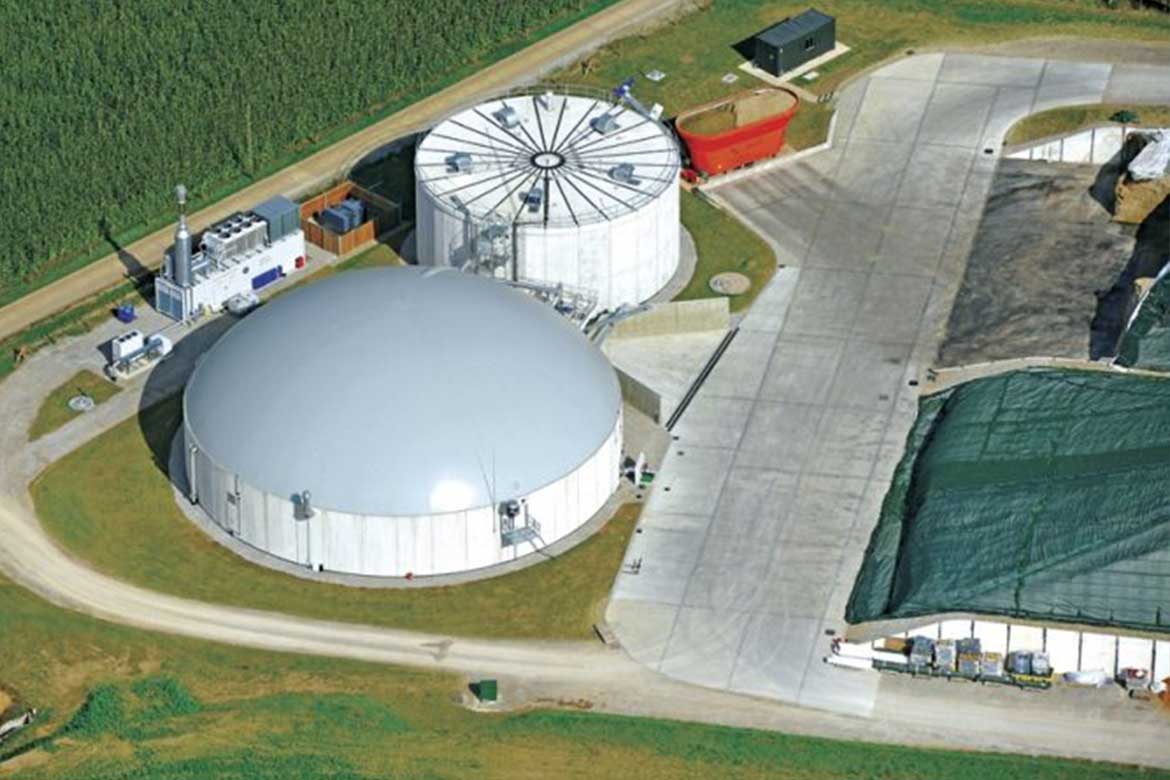

The following three stages are involved in the process of anaerobic digestion.
Hydrolysis
In the process of hydrolysis the complex molecular compounds i.e. polymers are converted into the simple molecular form i.e. monomers.
Acidogenesis
The monomers so formed at the end of hydrolysis process are converted into volatile fatty acids. Acetic acid forms the major portion of volatile fatty acids. The process of conversion of monomers into acids is carried out by a group of anaerobic bacteria known acid formers.
Methanogenesis
Acids produced at the end of Acidogenesis process are converted into carbon dioxide and methane gases. The process of conversion of acid into gases is carried out by group of anaerobic bacteria known as methane formers.
In CSTR process the bacteria responsible for digestion process are kept in suspension with the help of Lateral as well as central mixers.
PROCESS DESCRIPTION
Wastewater Transport
Raw effluent i.e. raw spent wash from the distillery shall be carried to treatment site through suitably designed channel or a closed pipe depending upon the topography of the site. Raw spent wash shall then be passed through heat exchanger [if required] to bring down the temperature to 38oC – 40oC raw spent wash. Pumps are installed to pump the raw effluent from buffer tank to reactor.
CSTR Reactor
The CSTR Reactor is designed on the principle of
anaerobic contact process. The raw effluent enters the CSTR at the top in a central
shaft. The Recirculated sludge is also mixed with raw effluent in a central shaft. A
central agitator is provided at the top to facilitate mixing and downward movement
of the mixed effluent. The effluent travels to the bottom of reactor through central
shaft. In reactor the effluent comes in the contact with active anaerobic culture
maintained in the suspension. In the process the organic matter in the effluent is
converted in to biogas and cell mass. The liquid travels upward in the reactor. 6
Nos. of lateral agitators are provided for mixing and upward movement of the liquid.
The effluent is then taken out of the reactor through overflow pipe
provided with water seal. The effluent will be received in a lamella clarifier where
the active biomass will be separated and part of it is recirculated back to the
reactor. Before entering into the lamella clarifier the effluent is passed through
degassing tower for removal of dissolved gases to achieve better settling in the
lamella clarifier. Lamella clarifier is fabricated with anticorrosive paint and is
provided with inclined plates. The clarifier shall also be provided with sludge
withdrawal arrangement. Sludge Recirculation pumps is provided to recirculate the
sludge back to the CSTR reactor. The post anaerobic effluent is then taken to
secondary treatment for further removal of the organics.
CSTR reactor will be
erected and fabricated at site using mild steel plates and structural members. The
CSTR reactor will be rested on floating type foundation. The reactor will be painted
from inside with chlorinated rubber paint and synthetic enamel paint from outside.
Biogas Recovery
Biogas will be collected at the top of the reactor and will be stored in a gasholder separately constructed. Biogas holder is fabricated in MS plated and shall be of floating type. Biogas from biogas holder will be compressed and sent to boiler for burning. Flare stack is provided to flare the excess biogas.

